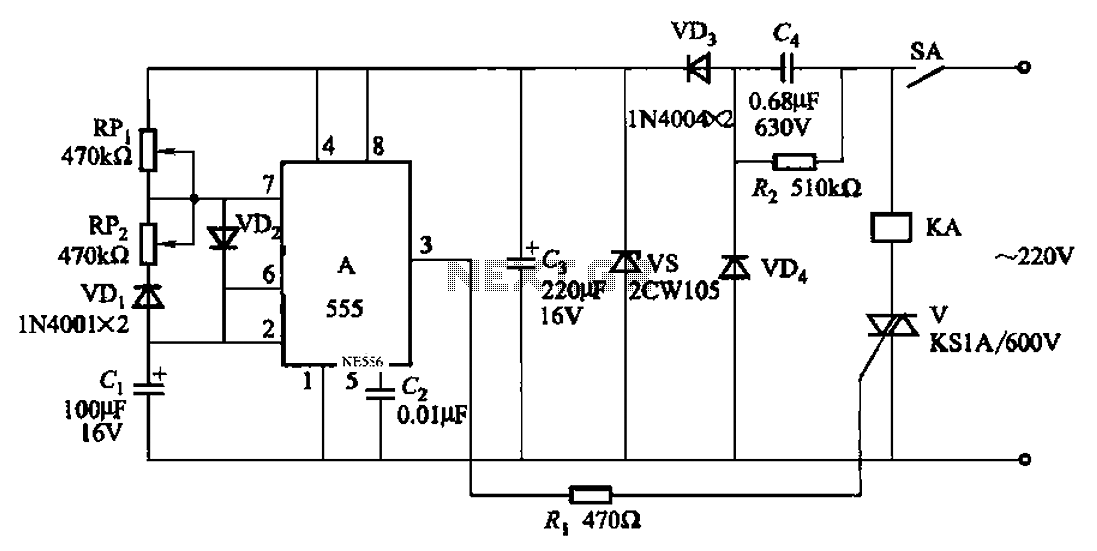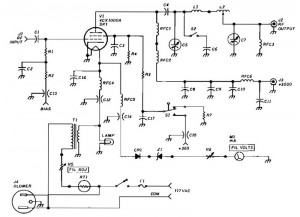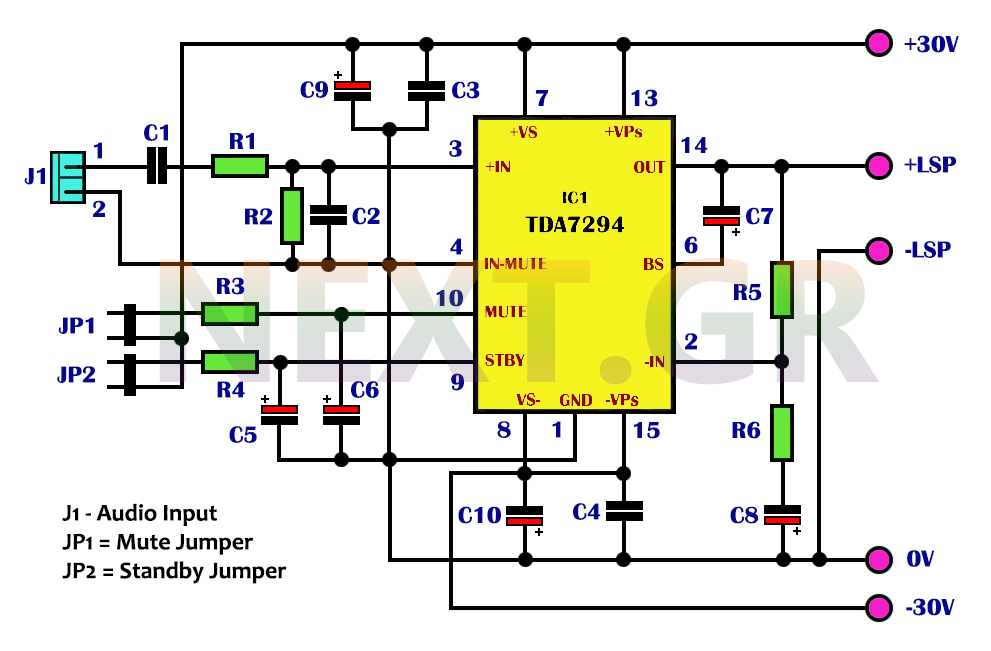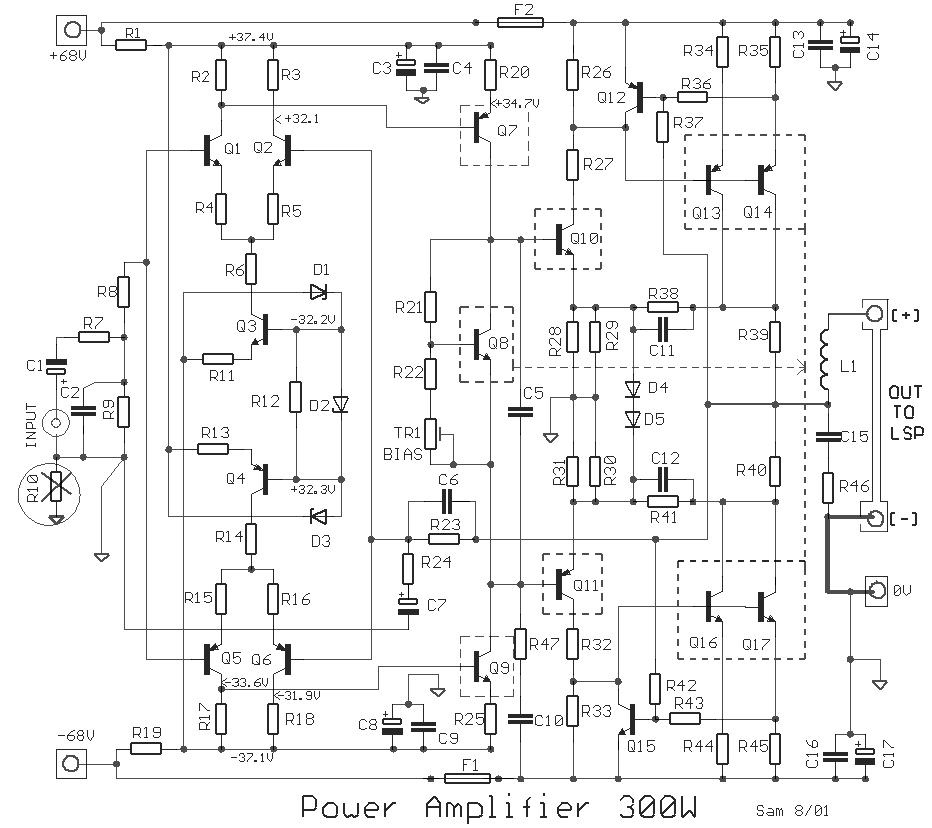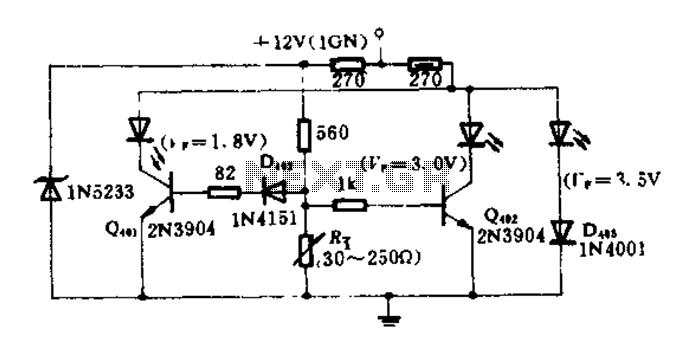
Battery discharge status indicator circuit
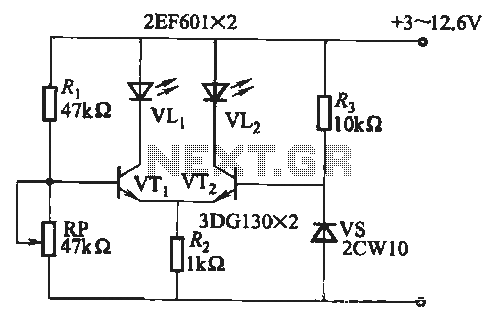
When the battery voltage is within the range of 7 to 12.6V, the light-emitting diode VLi illuminates, maintaining a consistent brightness. If the battery voltage drops below 7V, VLi begins to emit a red light, and the brightness of the light-emitting diode L2 decreases. When both light-emitting diodes exhibit the same brightness, it indicates that the battery should be recharged or replaced. If the battery voltage falls within the range of 2.5 to 6V, VLz emits a red light, signaling that the battery voltage is below normal levels. By selecting appropriate resistors and regulators, the circuit can be adapted to monitor different battery voltage levels.
The circuit described utilizes light-emitting diodes (LEDs) to provide visual indicators of battery voltage levels. The primary components include three LEDs: VLi, L2, and VLz, each serving a specific function based on the voltage detected from the battery.
The operational range of the circuit is defined by the battery voltage, which is monitored through a voltage divider network connected to a microcontroller or a comparator. When the battery voltage is within the specified range of 7 to 12.6V, VLi is powered and remains illuminated at a steady brightness, indicating that the battery is functioning normally.
As the voltage decreases and falls below 7V, VLi transitions to a red state, indicating a warning condition. Concurrently, L2's brightness diminishes, which serves as a secondary indicator of the declining battery condition. This dual LED indication allows for immediate visual feedback regarding the battery's status.
When the voltage further declines to between 2.5V and 6V, VLz is activated, providing a critical warning that the battery voltage is dangerously low. This stage signals that immediate action is required, either by recharging the battery or replacing it entirely.
To ensure accurate voltage monitoring and LED functionality, the circuit incorporates resistors to limit current through the LEDs and a voltage regulator to maintain consistent operation across varying input voltages. The values of these resistors can be adjusted based on the specific requirements of the application, allowing for flexibility in monitoring different battery types and voltages.
This design is suitable for applications where battery monitoring is essential, such as in portable devices, electric vehicles, or renewable energy systems, providing a reliable method to ensure that battery levels remain within safe operational limits.When the battery voltage is 7 ~ 12. 6V range, the light emitting diode VLi lights, which light cutting almost unchanged. If the battery voltage falls under 7V VLi beginning red light emitting diode, and a light emitting diode , L2 brightness decreases. When the two are the same brightness light-emitting diode, the battery should be recharged or replaced. When the battery voltage when Yap in 2. 5 ~ 6V range, VLz red, battery voltage has forecast below normal. Select the appropriate indicator of the resistors and the regulator, can adapt to the needs of different monitoring battery voltage.
The circuit described utilizes light-emitting diodes (LEDs) to provide visual indicators of battery voltage levels. The primary components include three LEDs: VLi, L2, and VLz, each serving a specific function based on the voltage detected from the battery.
The operational range of the circuit is defined by the battery voltage, which is monitored through a voltage divider network connected to a microcontroller or a comparator. When the battery voltage is within the specified range of 7 to 12.6V, VLi is powered and remains illuminated at a steady brightness, indicating that the battery is functioning normally.
As the voltage decreases and falls below 7V, VLi transitions to a red state, indicating a warning condition. Concurrently, L2's brightness diminishes, which serves as a secondary indicator of the declining battery condition. This dual LED indication allows for immediate visual feedback regarding the battery's status.
When the voltage further declines to between 2.5V and 6V, VLz is activated, providing a critical warning that the battery voltage is dangerously low. This stage signals that immediate action is required, either by recharging the battery or replacing it entirely.
To ensure accurate voltage monitoring and LED functionality, the circuit incorporates resistors to limit current through the LEDs and a voltage regulator to maintain consistent operation across varying input voltages. The values of these resistors can be adjusted based on the specific requirements of the application, allowing for flexibility in monitoring different battery types and voltages.
This design is suitable for applications where battery monitoring is essential, such as in portable devices, electric vehicles, or renewable energy systems, providing a reliable method to ensure that battery levels remain within safe operational limits.When the battery voltage is 7 ~ 12. 6V range, the light emitting diode VLi lights, which light cutting almost unchanged. If the battery voltage falls under 7V VLi beginning red light emitting diode, and a light emitting diode , L2 brightness decreases. When the two are the same brightness light-emitting diode, the battery should be recharged or replaced. When the battery voltage when Yap in 2. 5 ~ 6V range, VLz red, battery voltage has forecast below normal. Select the appropriate indicator of the resistors and the regulator, can adapt to the needs of different monitoring battery voltage.
Warning: include(partials/cookie-banner.php): Failed to open stream: Permission denied in /var/www/html/nextgr/view-circuit.php on line 713
Warning: include(): Failed opening 'partials/cookie-banner.php' for inclusion (include_path='.:/usr/share/php') in /var/www/html/nextgr/view-circuit.php on line 713

